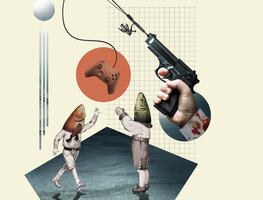Más Información

Videojuegos, el nuevo gancho del crimen para captar menores; los atraen con promesas de dinero y poder

“Vamos a dar apoyo a los pequeños agricultores por sequía en Sonora”; Claudia Sheinbaum instruye a Berdegué

Derrota de México en disputa por maíz transgénico contra EU; estos son los argumentos de Sheinbaum y AMLO para prohibirlo
On September 6, 1967, then-Defense Minister Marcelino García Barragán decorated first cavalry captain Kingo Nonaka, a Japanese citizen whose adventures in the Mexican Revolution remained in the shadows until last year.
Born in 1889, Nonaka left Fukuoka Prefecture on the Japanese island of Kyushu, where he worked in the field and as pearl hunter, at age 17 to migrate to Mexico in 1906, where he participated in 14 combat operations during the Revolution: two with the army of Francisco I. Madero and 12 with the Northern Division commanded by Francisco Villa.
Nonaka was the first historic photographer of Tijuana, where he opened a couple of studios. The hundreds of photos he took with his Graflex camera earned him the title of the Casasola of Tijuana, referring to the Casasola brothers who took photos of the Mexican Revolution.
He lived in Baja California from 1921 to 1942 until he was forced to emigrate to Mexico City on orders from the government of Lázaro Cardenas due to the racism against Japanese during the Second World War.
Nonaka was also mason, coffee grower, firefighter, police, criminologist and nurse at the National Cardiology Institute Ignacio Chávez.
The book about his life, published by his son Genaro Nonaka Garcíaand historian José Gabriel Rivera Delgado in November 2014, summarizes his life from his arrival in Salina Cruz until his death in 1977.







